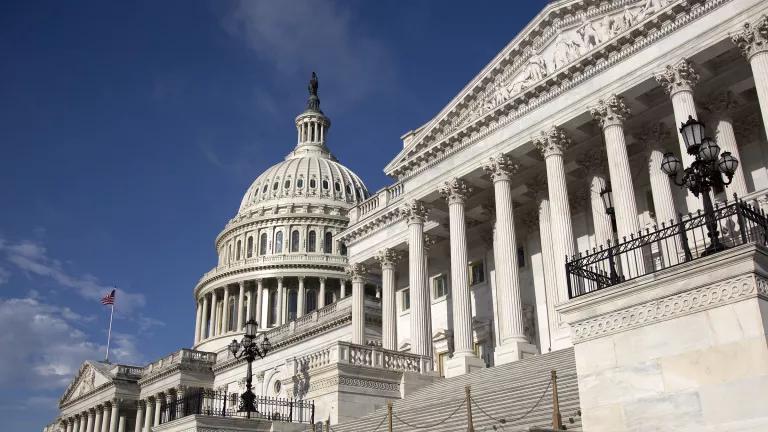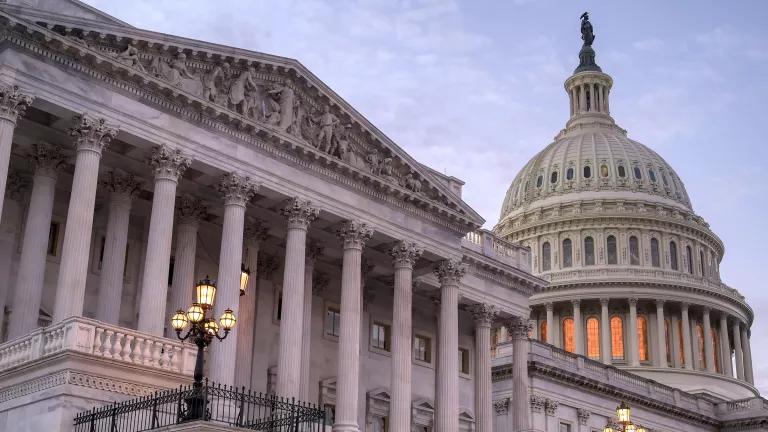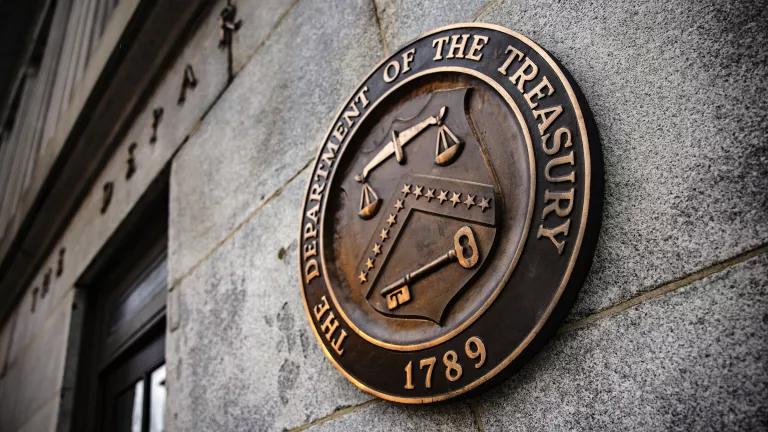In Biden’s Win, a Unifying Call for Bold Action on Climate
It’s now time to turn campaign promises into climate progress. Here’s what that looks like.

It’s now time to turn campaign promises into climate progress. Here’s what that looks like.
UPDATE: On December 14, 2020, the electoral college formally confirmed Joe Biden as the nation's next president. By then, Biden's lead over Donald Trump in the popular vote had surpassed 7 million.
With climate change front and center on the ballot for the first time, Joe Biden and Kamala Harris sounded a clarion call for progress, laying out the strongest national plan ever to confront this widening crisis.
By a margin of more than 5.3 million votes, Americans embraced this sweeping agenda for change, delivering a unifying call to climate action—starting on day one.
Climate change joins the coronavirus pandemic, the recession it has caused, and long-festering racial injustice in the maelstrom of interwoven crises that Biden will inherit. The challenges are daunting, and the response he rallies the nation around will largely define both his presidency and the nation’s future.
We need to bring the raging pandemic under control, get our staggering economy humming again, and put an end to systemic racial injustice and inequity. And we must address the climate crisis that has upended so many American lives, from the heartland to the sea.
As with the pandemic, we need a climate response that’s grounded in sound science, puts people back to work, and expands protections and opportunities for low-income communities and people of color.
Far from conflicting, these solutions fit hand in glove with Biden’s blueprint for progress on climate, health, jobs, and racial equity. With real benefits for everyone, that’s a plan we should all be able to get behind as a nation, starting with shifting to clean energy—and quickly.
Biden has pledged $2 trillion in strategic investments over the next four years, along with supporting standards and policies to set the country on the path to a carbon-neutral economy by 2050 and zero-carbon electricity by 2035.
That’s important.
The science tells us we’ve got to cut carbon pollution in half by 2030 to avert the worst consequences of climate change.
That means reversing the Trump administration’s rollbacks of clean vehicle and fuel economy targets and setting strong new standards to cut carbon pollution from the cars and trucks that together account for more than a quarter of our carbon emissions; we also need to clean up our dirty power plants, which account for a third of our carbon footprint.
By investing in energy efficiency, building first-rate electric vehicles, getting more clean power from the wind and sun, and modernizing our electric grid and storage systems, we can cut carbon pollution, protect public health, and create jobs. When the pandemic hit, nearly 3.4 million Americans were working to help us do all that, at jobs paying 25 percent more on average than median wages nationally.
Biden’s plan will create millions more jobs while helping to get idled clean energy workers back in the field. This investment must be central to a larger pandemic recovery package, to help pull our nation out of recession and lay the foundations for strong, durable, and broad-based growth. It will also help us beat the pandemic by reducing the tailpipe and smokestack pollution that aggravates the very types of respiratory ailments that have made people—especially Black and brown people—more likely to die from the coronavirus.
Doing what’s best for our people at home sets the stage for climate leadership abroad. That starts with restoring U.S. participation in the landmark 2015 Paris climate agreement, as Biden has pledged to do, so we can help lead and strengthen a global response to this global crisis.
Biden’s plan will advance environmental justice, equitable opportunity, climate resilience, and health in urban, rural, and tribal communities.
For far too long, people of color and low-income communities have paid the highest price for the climate crisis, despite having done the least to cause it. Biden’s plan will address those inequities head-on, making environmental justice a priority across every federal agency.
He’ll ensure that historically disadvantaged communities receive 40 percent of new federal assistance to promote clean energy, sustainable transit, worker training, pollution cleanup, and related initiatives. He’s promised comprehensive environmental monitoring and protection for communities near factories, refineries, and industrial farms.
And he’ll create an Office of Climate Change and Health Equity within the Department of Health and Human Services to lead efforts to reduce climate risks to children, the elderly, and other vulnerable groups.
Biden has pledged to work with urban, rural, and tribal communities to promote natural climate solutions and resiliency by, for example, restoring and protecting public lands and waters, making them less vulnerable to wildfires, storms, and floods; strengthening natural habitats like forests and wetlands that absorb carbon from the atmosphere and lock it away in healthy soils; and helping farmers do the same with the nation’s croplands.
He’ll safeguard biodiversity, confront species collapse, and strengthen natural carbon absorption by conserving at least 30 percent of U.S. lands, waterways, and ocean habitat by 2030. He’ll clean up rural areas damaged by drilling and mining, restore ravaged lands for productive use, and expand economic opportunity in distressed regions. And he’ll end taxpayer subsidies for fossil fuels, ban new drilling on public lands, and reject projects like the Keystone XL dirty tar sands pipeline that would wreak climate havoc.
With the election of Joe Biden and Kamala Harris, the map of possibility just got larger. Now it’s time to turn campaign promises into climate progress with sound investments, commonsense standards, and policy solutions that help us to cut carbon pollution, create millions of good-paying jobs, protect people’s health, and build a more just and equitable society.


